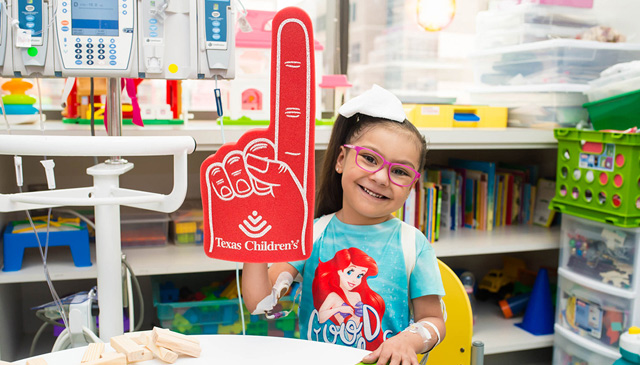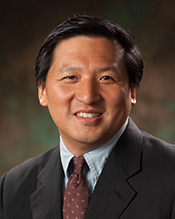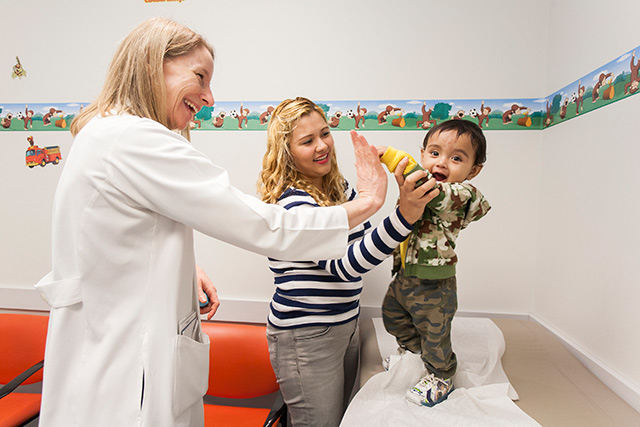 Texas Children’s Hospital has once again been named as a national leader among pediatric institutions by U.S. News & World Report in their recently published 2018-19 edition of Best Children’s Hospitals.
Texas Children’s Hospital has once again been named as a national leader among pediatric institutions by U.S. News & World Report in their recently published 2018-19 edition of Best Children’s Hospitals.
Ranked fourth among all children’s hospitals nationally and one of only 10 hospitals to achieve the Honor Roll designation for the tenth straight year, Texas Children’s is the only hospital in Texas – and the entire Southern region of the U.S. – awarded this coveted distinction.
“Each year, our Texas Children’s team exhibits incredible strength and kindness, as well as passion, caring for the inspirational children and families we serve,” said Texas Children’s President and CEO Mark Wallace. “I believe this is one reason why we continue to maintain the respect and reputation as one of the best hospitals in the nation, and the destination for pediatric care in Texas.”
In addition to ranking children’s hospitals overall, U.S. News & World Report also ranks the top 50 pediatric hospitals in 10 major sub-specialty areas. To be considered for the honor roll distinction, a hospital must have high rankings in at least three sub-specialties. For the second straight year, Texas Children’s Heart Center ranks No. 1 in the nation for pediatric cardiology and heart surgery. Texas Children’s Pulmonology ranks as the best program in the country for children with lung diseases.
Texas Children’s has 8 subspecialties ranked in the top 10, and the hospital improved outcomes across all sub-specialties. There are approximately 190 children’s hospitals in the U.S. and this year, 86 of the 189 surveyed hospitals were ranked among the top 50 in at least one sub-specialty. The 2018-19 Best Children’s Hospitals Honor Roll recognizes the 10 hospitals with the highest rankings across all sub-specialties. Here are a few highlights of this year’s rankings for Texas Children’s:
- Cardiology and Congenital Heart Surgery is again no. 1 in the nation and received the top score in externally reported risk-adjusted operative mortality for congenital heart surgery.
- Pulmonology, which first debuted in the top spot in the 2016 rankings, is now again ranked no. 1 in the nation. We received the top score in several asthma outcomes and structure metrics, such as mean LOS for asthma patients.
- Neurology and Neurosurgery moved from no. 4 to no. 3, receiving the top score in several outcomes metrics, such as 30-day readmissions for craniotomy and Chiari decompression and complication rate for epilepsy surgical procedures.
- Nephrology also moved from no. 4 to no. 3, with the top score in one-year kidney transplant graft survival and hemodialysis catheter-associated bloodstream infections.
- Urology moved from no. 6 to no. 4, propelled by the top score in unplanned hospital admission for urologic issues within 30 days of surgery, as well as significant improvements in hypospadias and revision surgeries.
Texas Children’s, working closely with our academic partner Baylor College of Medicine, continues to pioneer advancements in pediatric health care and earns the U.S. News honor roll distinction by being ranked among America’s best in:
- #1 Cardiology and Congenital Heart Surgery
- #1 Pulmonology
- #3 Neurology and Neurosurgery
- #3 Nephrology
- #4 Gastroenterology and GI surgery
- #4 Urology
- #6 Cancer
- #6 Diabetes and Endocrinology
- #15 Orthopedics
- #21 Neonatology
This year’s rankings are the results of a methodology that weighs a combination of outcome and care-related measures such as nursing care, advanced technology, credentialing, outcomes, best practices, infection prevention and reputation, among others.
“From a measurement perspective, our survey results demonstrate how hard we’re working as an organization to deliver high quality care to our patients,” Wallace said. “The more consistently we deliver high quality care and the safer we deliver that care to our patients, the better their outcomes are, and the better our overall numbers are.”
Our results continue to reflect the diligent efforts of a solid structure focused on the U.S. News survey. The process of compiling and refining our data is an ongoing challenge, which will continue to improve under the excellent leadership of Trudy Leidich, Elizabeth Pham and the entire USNWR team.
The 2018-19 edition of Best Children’s Hospitals is available online at www.usnews.com/childrenshospitals.


 Texas Children’s work to develop a novel non-invasive device for pediatric ureteral stent removal after a urinary tract procedure, with Baylor College of Medicine, Rice University’s Oshman Engineering Design Kitchen (OEDK) and Department of Bioengineering, as well as local life sciences commercialization firm Fannin Innovation Studio, was recently funded by the National Institute of Diabetes and Digestive and Kidney Diseases (NIDDK) of the National Institutes of Health (NIH). The $225,000 Small Business Innovation Research (SBIR) grant will be used to conduct further development of an electromagnetic device for removal of ureteral stents in pediatric patients.
Texas Children’s work to develop a novel non-invasive device for pediatric ureteral stent removal after a urinary tract procedure, with Baylor College of Medicine, Rice University’s Oshman Engineering Design Kitchen (OEDK) and Department of Bioengineering, as well as local life sciences commercialization firm Fannin Innovation Studio, was recently funded by the National Institute of Diabetes and Digestive and Kidney Diseases (NIDDK) of the National Institutes of Health (NIH). The $225,000 Small Business Innovation Research (SBIR) grant will be used to conduct further development of an electromagnetic device for removal of ureteral stents in pediatric patients.



